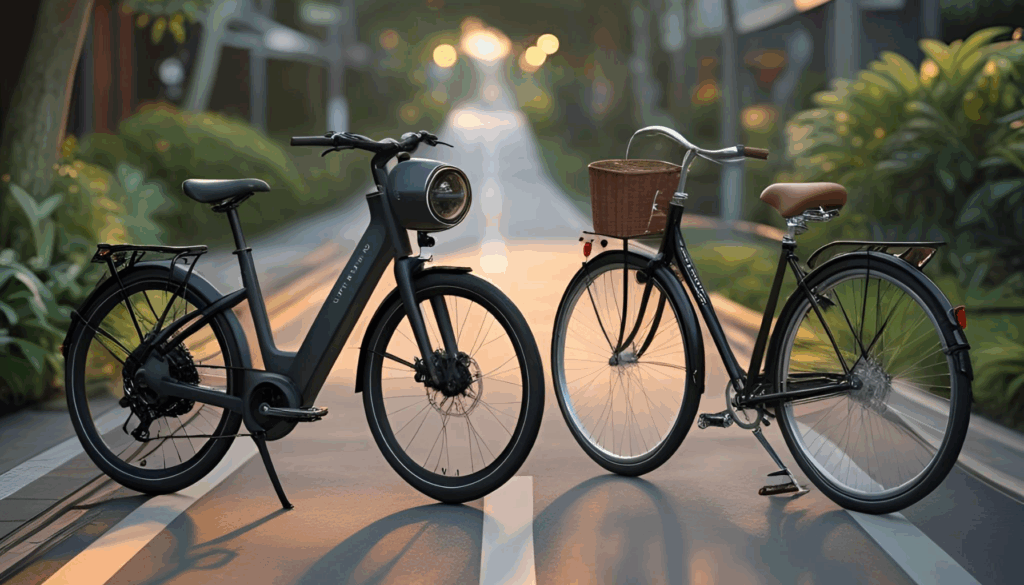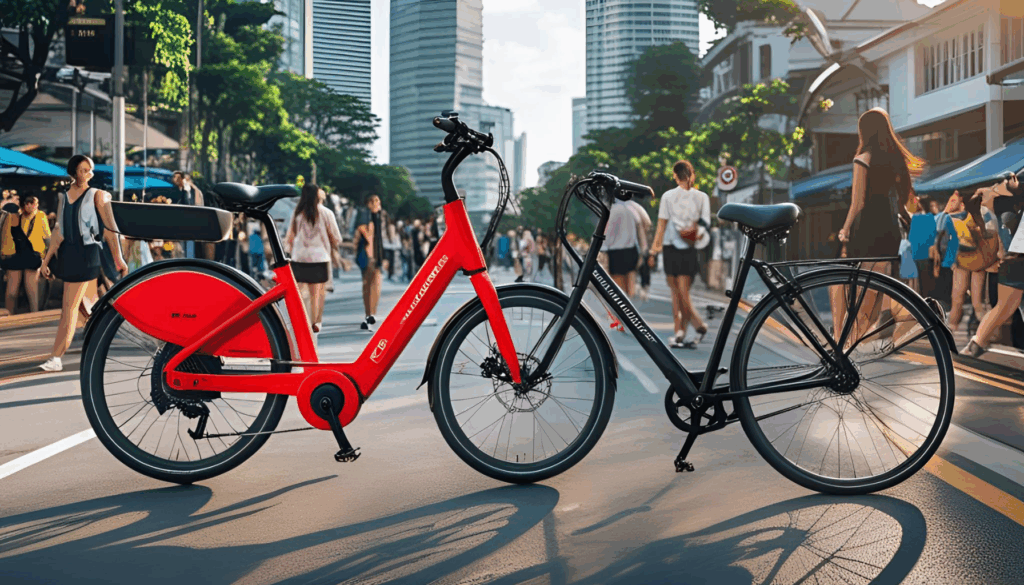Table of Contents
As the popularity of electric bicycles (ebikes) continues to surge, cyclists are increasingly raising the question: do ebikes require more ebike repairs than traditional bicycles? The answer is not as straightforward as one might think. With their advanced technology and additional components, ebikes can sometimes present unique challenges in upkeep.
Understanding the essential ebike repair procedures and comparing them to regular bicycle maintenance is crucial for cyclists and potential ebike owners alike. In this blog, we will delve deep into the differences in maintenance needs between ebikes and bicycles, helping you make an informed choice in your cycling adventures.

Understanding the Components of Ebikes and Bicycles
To understand whether ebikes require more maintenance than traditional bicycles, it’s essential to consider their components. Ebikes are equipped with electrical systems that include motors, batteries, and controllers, in addition to standard bicycle parts like gears, brakes, and tires. The presence of these electrical components introduces new maintenance needs, such as battery care and performance checks, which are generally absent in conventional bicycles.
Moreover, the complexity of these systems can often mean that repairs—such as ebike repair—may require specialized knowledge and tools, potentially leading to higher servicing costs and a more rigorous maintenance schedule. Conversely, traditional bicycles are simpler in design, primarily relying on mechanical components that are straightforward to repair or replace. Regular maintenance on a bike typically involves lubricating chains, adjusting brakes, and ensuring tires are properly inflated.
For many users, this straightforward maintenance regime can be less daunting and more manageable compared to an ebike’s requirements. Ultimately, the choice between an ebike and a bicycle will hinge on usage preferences and the willingness to engage in more involved maintenance practices associated with ebike models.
Common Maintenance Tasks for Ebikes
Moreover, mechanical components such as the brake systems, chain, and gears should also be maintained similarly to how you would on a standard bike, which includes regular lubrication and alignment checks. However, ebike owners must also be mindful of the motor system. This includes the drive unit and its calibration, which may periodically require professional oversight to ensure optimal performance.
Overall, while some tasks are similar, the unique features of ebikes introduce additional layers of maintenance that may require more attention and expertise, making it essential for owners to stay informed to minimize repair costs and extend the longevity of their electric bikes.
Comparing Maintenance Requirements: Ebikes vs Traditional Bikes
When comparing maintenance requirements between ebikes and traditional bicycles, it’s crucial to understand the unique components of each. Traditional bicycles typically require regular maintenance and adjustments, which are straightforward and can often be done at home. On the other hand, ebikes come with additional systems.
These components typically demand specialized knowledge for maintenance and repair, as improper handling can lead to costly fixes. Moreover, while traditional bikes may only need parts replaced occasionally, ebikes may require more frequent inspections to ensure that the electrical components are functioning optimally, adding to their overall maintenance load. Despite these complexities, it’s not necessarily a case of ebikes being more burdensome in terms of upkeep.
Many ebike manufacturers now provide comprehensive service plans and warranties that can alleviate the worries of maintenance. Additionally, advancements in technology are making components more durable and user-friendly. Overall, while ebikes do involve some additional considerations for ebike repair, they can be manageable with proper care and awareness of the unique systems involved. Understanding these differences can help potential buyers make informed decisions about their investment in either form of cycling transport.
The Impact of Technology on Ebike Repair
The integration of technology in ebikes significantly influences their maintenance needs compared to traditional bicycles. Ebikes are equipped with intricate systems such as electric motors, batteries, and controllers that require specialized knowledge and tools for effective repair. Unlike conventional bicycles, which mainly consist of mechanical parts, the electronic components in ebikes necessitate a higher level of expertise during servicing.
This complexity can sometimes translate to more frequent maintenance requirements, particularly for components like the battery, which may need periodic checks or timely replacements to ensure optimal performance. Furthermore, considering the potential for software-related issues in ebikes, riders might find themselves visiting ebike repair shops more often than their traditional bike counterparts, leading to a different maintenance experience altogether. On the flip side, many ebike manufacturers are actively working to streamline these maintenance processes by providing clear guidelines and support for users.
Many also offer warranties that cover electronic components to alleviate some concerns about maintenance costs. Additionally, advancements in ebike technology, such as improved battery life and durable electronic parts, can mitigate the need for frequent repairs. Ultimately, while ebikes may require a more specialised approach to maintenance compared to bicycles, ongoing developments in technology continue to enhance their reliability and ease of upkeep, making them an appealing choice for many riders.
Cost of Maintenance: Ebikes vs Bicycles
When considering the cost of maintenance between ebikes and traditional bicycles, it’s essential to understand the different components involved. While a traditional bicycle typically requires basic upkeep such as tire inflation, chain lubrication, and brake adjustments, an ebike introduces a level of complexity that can lead to higher maintenance costs. This is primarily due to its electric components, which may require specialized knowledge for repairs, potentially increasing the frequency and expense of ebike repair.
Additionally, ebikes often utilize more expensive parts and accessories, which can add to the overall maintenance budget over time. Another factor to consider is the long-term value and durability of both options. Bicycles generally boast a longer lifespan with fewer recurring costs, while ebikes may necessitate more frequent battery replacements and electrical system checks, further escalating maintenance expenses.
However, the convenience and efficiency of ebikes often offset these costs for users reliant on them for commuting or extensive travel. Ultimately, while ebikes may indeed have a higher upfront and maintenance cost, the intended use and personal preferences will significantly influence which option proves more economical in the long run.
Tips to Reduce Ebike Maintenance Needs
Another essential tip is to keep the drivetrain clean and properly lubricated. Dirt and grime can significantly affect how efficiently the ebike runs, increasing wear on the components. Use a gentle cleaner specifically designed for bicycles, and apply a suitable lubricant to the chain, derailleur, and other moving parts.
Regular tire checks are also crucial; keeping them adequately inflated reduces rolling resistance and minimizes potential damage to the rims. Following these simple yet effective maintenance tips can keep your ebike running smoothly, ensuring fewer trips to the ebike repair shop and a more enjoyable riding experience.
When to Seek Professional Repair for Your Ebike
When it comes to maintaining an ebike, knowing when to seek professional repair is crucial for ensuring longevity and optimal performance. Unlike a traditional bicycle, ebikes contain complex electrical components, including batteries, motors, and wiring, which can require specialized knowledge for repairs. If you notice issues such as a decline in battery performance, malfunctions with the motor, or faulty electrical connections, it’s advisable to consult a professional ebike repair service.
Ignoring these issues could lead to more significant problems down the line, not to mention safety risks while riding. Regular check-ups and timely ebike repairs can help extend the lifespan of the ebike and enhance your riding experience. In addition to technical malfunctions, other signs indicate that professional help is needed. If your ebike is making unusual noises, experiencing inconsistent pedal assistance, or if the brakes are not responding as they should, it’s best to err on the side of caution.
A professional can conduct a thorough inspection, diagnosing any underlying problems that may not be immediately apparent. By seeking expert ebike repair services when necessary, you not only ensure your bike operates safely but also optimize its performance, allowing you to enjoy your rides to the fullest.
Final Thoughts on Ebike Maintenance
In conclusion, while ebikes do require a different kind of maintenance compared to traditional bicycles, understanding the nuances can help riders make informed decisions. The added components such as batteries and electric motors may necessitate more specialized care, but they also offer a unique riding experience that many find worthwhile.
Regular checks and knowledge of ebike repair can significantly prolong the lifespan of the electric components, ensuring that riders enjoy a smooth and efficient ride for years to come. Ultimately, the choice between an ebike and a traditional bicycle should factor in not just the maintenance concerns but also personal lifestyle, riding habits, and comfort.
Embracing the maintenance routines for either option can lead to a fulfilling cycling experience. Whether you choose a bicycle or an ebike, understanding how to care for your ride is essential for safety and longevity.
